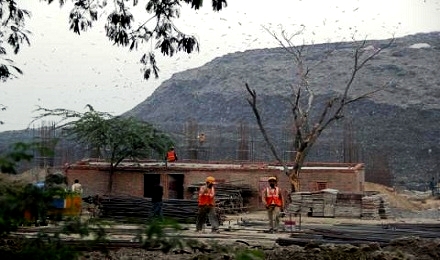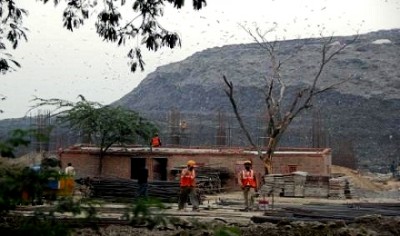Gopal Krishna
The promise of waste-to-energy projects in its manifesto to sort out garbage problems by BJP is anti-environment, and anti-people. This promise reveals that both Congress and BJP are hand in glove in adopting the hazardous incinerator technology.
Toxics Watch Alliance (TWA) supports the hunger strike against the Okhla waste to energy incinerator by the residents.
Delhi Chief Minister inaugurated the 20.9 MW plant despite bitter resistance of the residents, environmental groups and waste pickers.
Senior BJP leader Vikay Kumar Malhotra too had supported the struggle against this heavily polluting plant both in writing and on TV. Now his party has revealed that it support the hazardous plant and not the citizens of Delhi.
This double speak by BJP is condemnable.
The callousness of both BJP and Congress towards the sad plight of residents of Okhla, Narela-Bawana and Ghazipur, environment and the livelihood of waste pickers due to hazardous waste to energy incinerators is unacceptable.
Okhla waste to energy incinerator plant has faced opposition since 2005 due to its adverse public health consequences. The plant in question has violated every rule in the rule book. It is a matter of fact that such plants have consistently failed in India.
The consent of the people of Okhla which is a ‘must’ before granting clearances and cumulative impact assessment was never taken. The people of Okhla never gave their consent for this hazardous project in their proximity. There is documentary evidence that the public hearing that was conducted was fake, it was conducted at Saket.
The environmental clearance given to the project is also flawed as it has been amended repeatedly to increase the amount of waste treated and energy generated in an apparent effort to grab subsidies being offered by Ministry of New & Renewable Energy (MNRE).
The cumulative impact assessment of the pre-existing biomedical waste incinerator and the new municipal waste incinerator has never been done. The emissions from both these units are already becoming part of body burden of residents of Okhla.
The imminent public health crisis due to biomedical waste incinerator plant and the construction of municipal waste to energy incinerator in Delhi’s Sukhdev Vihar residential area which is surrounded by university, schools, hospitals, bird sanctuary and several other residential areas of Okhla is crying for attention. Similar hazardous plants are proposed in Delhi’s Narela-Bawana and Ghazipur.
The minutes of the Environment Pollution (Prevention & Control) Authority for the NCR (EPCA) reveal that Municipal Corporation of Delhi (MCD) was asked about the actions taken to improve Municipal Solid Waste (MSW) management in Delhi. “To this MCD replied that individual waste to energy projects have been already given to Jindal, Ramky and GMR, which will result in minimal inert residue for land filling along with the generation of electricity,” the minute reads. This is factually deceptive and scientifically incorrect.
As per the Manual on Municipal Solid Waste Management, Union Ministry of Urban Development, physical composition of Indian waste shows that inert material constitutes from 43.59 % to 53.90 % and compostable matter constitutes 44.57 % to 30.84 %. Thus, the total inert residue from waste to energy incinerator projects will be significantly higher after the incineration of waste which will produce toxic ash as well that requires disposal in engineered landfills.
This grave situation has emerged due to evidently flawed waste to energy policy of central government, state government and the MCD which are providing incentives to hazardous incinerator and co-incineration incineration technologies like Refuse Derived Fuel (RDF).
Political parties other than BJP and Congress must promise to work for abandonment of this harmful policy to save irreparable damage to sustainable and sane municipal solid waste management practices. It may be noted that besides being an emitter of Persistent Organic Pollutants, as per Annexure A of Kyoto Protocol, waste incineration is a green house gas emitter. The Ministry of Power can vouch for the fact that the energy from municipal is inconsequential compared to the colossal public health concerns.
It may be recollected that pursuant to the agitation of the residents, environmental and waste picker groups, Jairam Ramesh, the then Union Minister of Environment & Forests had taken cognizance of the emerging public health threats from the waste to energy incinerator in the vicinity of residential premises. He had written to the Chief Minister of National Capital Region of Delhi as well after he heard the testimonies of the people who are adversely affected by the waste to energy incinerator. The letter was sent following a site visit on March 30, 2011 and meeting with residents on 31st March, 2011.
The views expressed in this article are the author’s own and do not necessarily reflect BH’s editorial policy.










